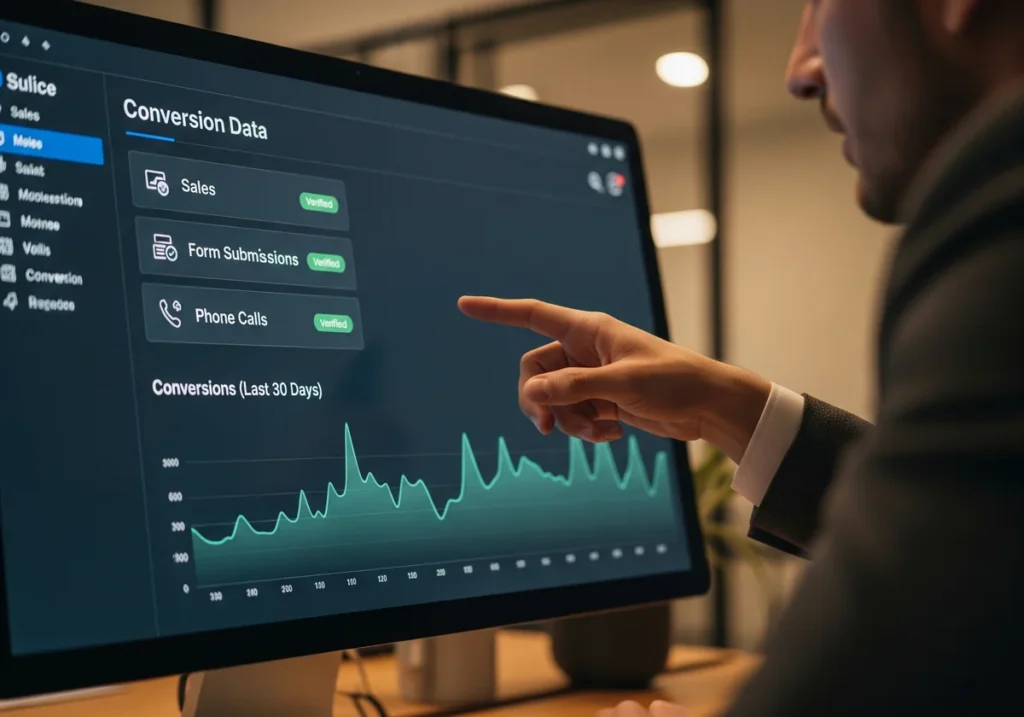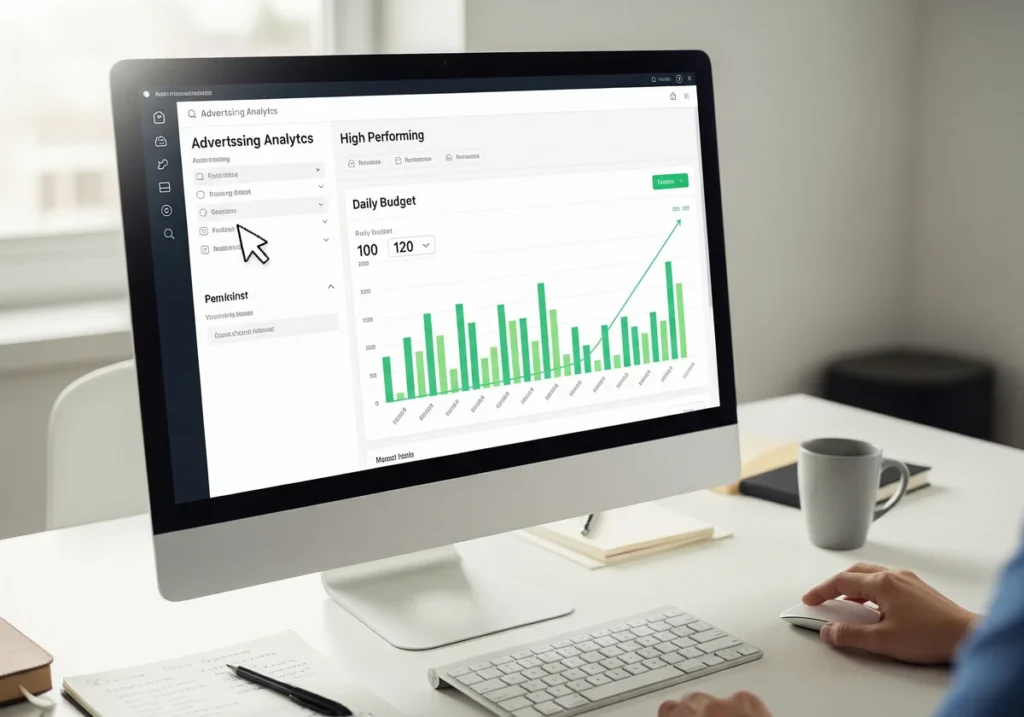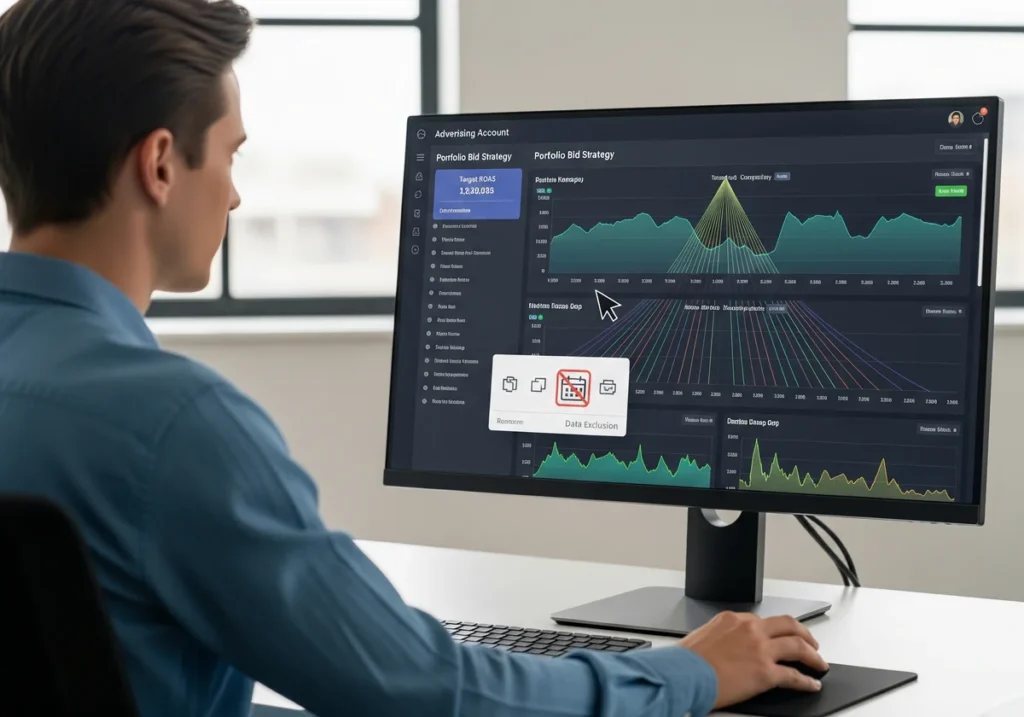
Thinking of increasing your Google Ads budget? Brilliant! That means your business is growing and you’re ready to reach more customers. But throwing more money at your campaigns without a proper plan is a disaster waiting to happen.
We’ve seen too many businesses get excited at the prospect of scaling up, only to watch their cost-per-click increase and their return on investment nosedive. That’s why it’s important to know the difference between effective budget increases and wasteful spending.
In this article, we’ll show you how you can spend your Google Ads budget effectively. You’ll learn to identify what’s working, find the perfect opportunities for growth, and avoid common mistakes that drain your advertising budgets.
Let’s get started.
Audit Campaign Health Before You Scale Google Ads
Auditing your campaign health means taking a comprehensive look at how your Google Ads are performing right now. Your audit should cover three main areas: conversion tracking accuracy, landing page performance, and account quality scores.
Each area here plays a vital role in determining the effectiveness of your increased budget. Consider it a health check for your advertising account. You wouldn’t increase your gym routine without checking your fitness level first, and the same logic applies to your Google Ads budget.
In our experience, the campaigns that looked “okay” at smaller budgets became expensive disasters with more money. But the accounts that went through proper audits performed differently.

In essence, a proper audit reveals which parts of your campaigns are firing on all cylinders and which ones are draining your funds. We’ll now explain the main areas your audits should cover.
Solidify Your Conversion Tracking and Data
If you can’t measure what’s working, you can’t make decisions about where to spend more money. So your conversion tracking must be spot-on before you increase any budget.
First, you have to check that tracking is working correctly for sales, leads, phone calls, and any other actions that are important for your business. To do so, you can simply log into your Google Ads account and verify that conversions are being recorded accurately.
You also need enough historical data to make informed decisions. You’ll want to gather data for at least 30 to 50 conversions in the past 30 days. This information will give you a reliable baseline to work from the moment you start to scale up.
Assess Landing Page Performance
When you send more traffic to pages that don’t convert well, you’ll burn through your budget faster than you can say ‘optimisation.’
So, avoid wasting money by checking your page load speed through Google PageSpeed Insights. Because pages that take more than three seconds to load lose potential customers before they even see your offer.
Mobile-friendliness is equally important here, as most of your traffic will come from mobile devices.
Don’t forget to take a look at your conversion rates, too. If a page converts at 1% and another at 20%, you know which one deserves more of your budget allocation.
Review Ad Account Quality Scores
Quality Score is Google’s report card for your ads. It tells you how well your keywords, ad copy, and landing pages work together.
If you get scores below 5 out of 10, it indicates problems you need to fix before you scale. Low scores mean you’re paying more per click than you should be, while higher quality scores lead to lower costs and better ad positions for your campaigns.
Build Your Google Ads Budget Strategy Framework
A Google Ads budget strategy framework is your guideline for making informed spending decisions based on data. Most businesses increase budgets when they feel optimistic or cut them when they panic. This reactive approach leads to inconsistent results and wasted money.
That’s why a proper framework connects your financial goals directly to specific actions in your account. You’ll know when to scale up, when to optimise, and when to pause campaigns rather than wondering if you should increase your spending.
In simple terms, your budget framework for Google Ads is a decision-making tool that works even when you’re not actively monitoring your account. Let’s find out how you can use this tool effectively.
Establish Your Key Performance Indicators (KPI)
Before building your framework, you must define what success looks like for your business. You’ll need KPIs for that, which are quantifiable metrics for measuring your success. The two most important financial KPIs for Google Ads strategy are Cost-Per-Action (CPA) and Return on Ad Spend (ROAS).

These KPIs will guide every budget decision you make. They’re profit-focused measurements that ensure every dollar you spend contributes to achieving your goal.
As long as you get the calculations right, your framework will protect you from overspending while maximising growth opportunities.
Here’s how to define your main financial goals with CPA and ROAS.
Cost Per Action (CPA)
CPA refers to the maximum amount you can afford to pay for one new customer while remaining profitable. To calculate your CPA, determine your average customer lifetime value, then subtract your product costs and desired profit margin.
For example, if a customer is worth $200 and your costs are $80, your maximum CPA might be $60 (leaving $60 profit).
Return on Ad Spend (ROAS)
The ROAS shows the minimum revenue you need from your ads for every dollar spent. Suppose you’ve spent $100 on ads and need $300 in revenue to cover all costs and achieve your profit targets. Then your Target ROAS is 3:1. It’s your baseline for campaign performance.
Create a Tiered System for Action
Your two KPIs can now power a simple three-tier, confusion-free system for budgeting. This system tells you exactly what to do based on performance, so you never have to guess about scaling decisions.
Here’s a simple breakdown of the three-tier campaign management system.
Tier 1: Top Performers (Scale Up)
In this tier, your star campaigns consistently beat target ROAS or stay comfortably under CPA targets. Since these campaigns are your main money-makers, they deserve budget increases.
Take a campaign that’s delivering 4:1 ROAS when you’re aiming for 3:1. You can confidently boost its budget by 20-30% weekly.
Tier 2: Steady Performers (Optimise)
Are your campaigns meeting the targets or coming close to them? Then these campaigns fall into the middle tier. Keep spending steadily for them rather than adjusting their budgets. Instead, focus your efforts on improving ad copy, keywords, or landing pages.
Consider a campaign delivering a 2.8:1 ROAS against a 3:1 target. You can see that it’s nearly there and just needs fine-tuning instead of drastic changes to cross the finishing line.
Tier 3: Poor Performers (Pause)
Some campaigns will miss your targets by a lot, and that’s when you need to make tough decisions. Pause these budget-draining campaigns, then redirect those funds to your top performers.
For instance, if you have a campaign consistently delivering 1.5:1 ROAS when you need 3:1, it’s clearly time to switch it off and move your spending to where it works.
Choose a Method to Increase Your Ad Spend
Once your strategic framework is in place, you must decide how to implement those budget increases. There are two practical, distinct methods for increasing ad spend: growing your existing campaigns or expanding into new areas.

Think of it like you’re either deepening a well that already produces water, or you’re taking a risk and digging fresh holes elsewhere. Both ways work, but timing is important here to produce results.
You’ll probably find this surprising, but attempting both approaches simultaneously often creates more problems than solutions. Instead, you should choose based on how your campaigns are performing right now, how much money you have to work with, and your risk tolerance.
So, most businesses achieve better results when they master one approach first.
Vertical Scaling: The 20% Guideline
Vertical scaling is just another way of saying you methodically increase the daily budget on your best-performing campaigns. You only want to do this for campaigns that consistently deliver results above your targets, because these are the ones already proving they can handle more spending without falling apart.
But what’s a good plan for vertical scaling?
There’s this widely accepted “20% Guideline” that most of us swear by. It suggests increasing budgets by no more than 20% at a time, then waiting 7 to 14 days between increases to let Google’s algorithm settle in properly. It’s like giving your campaigns time to breathe.
For example, if your campaign currently spends $100 daily with a 4:1 ROAS, increase it to $120 daily. Then you monitor performance for two weeks before even thinking about another increase. Trust me, patience pays off here.
Horizontal Scaling: Expanding Your Reach
Horizontal scaling involves taking what you’ve learnt from your successful campaigns and using that knowledge to launch new ones. The idea is to find fresh groups of customers that you haven’t reached yet.
This could mean targeting new areas of the country, adding new keyword themes that relate to what’s already working, or expanding onto different platforms like YouTube with audiences that are genuinely interested in what you offer.
The advantage here is that you’re reaching people who haven’t seen your ads before, so they’re not suffering from ad fatigue.
But there’s a downside to this approach as well. New campaigns take time to find their feet and may perform worse than your established ones at first. That’s completely normal, but it can be frustrating if you’re expecting instant results.
Pro-Tip: When you’re ready to try this method, start with small budgets for your new campaigns, and use your successful campaigns as blueprints for your ad copy, landing pages, and targeting strategies.
Adapt Bidding to Increase Ad Spend ROI
Ad spend ROI measures how much revenue you generate for every dollar you invest in advertising. As your budget grows, you’ll find that the manual strategy that helped you start your campaign may have begun holding you back.

The reason is simple. Larger budgets need more sophisticated bidding approaches, so you have to give Google’s algorithm clear instructions on how to spend those additional funds while keeping your ROI healthy or even improving it.
This is why switching from manual control to automated systems is extremely important. As your volume and data increase, machine learning can process thousands of auction signals in real time. It makes bidding decisions much faster and more accurate than any human could manage.
And these automated systems are quite clever at identifying users who are most likely to convert within your budget targets. They look at things like what device people are using, where they’re located, what time of day it is, and how they’ve been searching to place bids that give you the best chance of profitable conversions.
Based on our experience, businesses that don’t like this transition often see their performance hit a wall or even decline as they try to scale up.
Three Steps on Bidding Adjustments for Growth:
- Switch to Smart Bidding: Start using a value-based strategy like Target ROAS to match your bidding with your framework’s main goal. So if your Target ROAS is 4:1, you’d set your Smart Bidding to achieve that ratio across all auctions.
- Set Portfolio Targets: Portfolio bid strategies let you apply one unified ROAS or CPA target for multiple campaigns. This approach gives Google much more flexibility to find the lowest cost conversions anywhere in your account.
- Use Data Exclusions: When you’ve had a period of bad data (such as broken tracking or website downtime), data exclusions can tell your Smart Bidding strategy to ignore those problematic periods. They will ensure optimised bidding based on accurate historical performance rather than letting corrupted data points throw everything off course.
The Final Formula
The topic of scaling Google Ads budgets terrifies many business owners because one wrong move can drain profits quickly. But the best news is that effective scaling follows proven principles to protect your investment while accelerating growth.
In this guide, we’ve shown you the complete process of scaling a Google Ads budget: audit your campaigns first, and learn how to build a strategic framework with clear KPIs. You also know now how to choose between vertical and horizontal scaling methods and adapt your bidding strategy accordingly.
Let us at KC Freedom handle your Google Ads scaling strategy. We can maximise every dollar you spend. Contact us today for consultations.